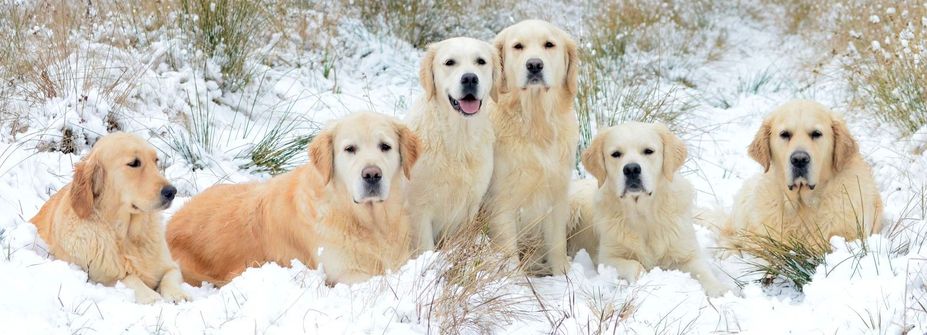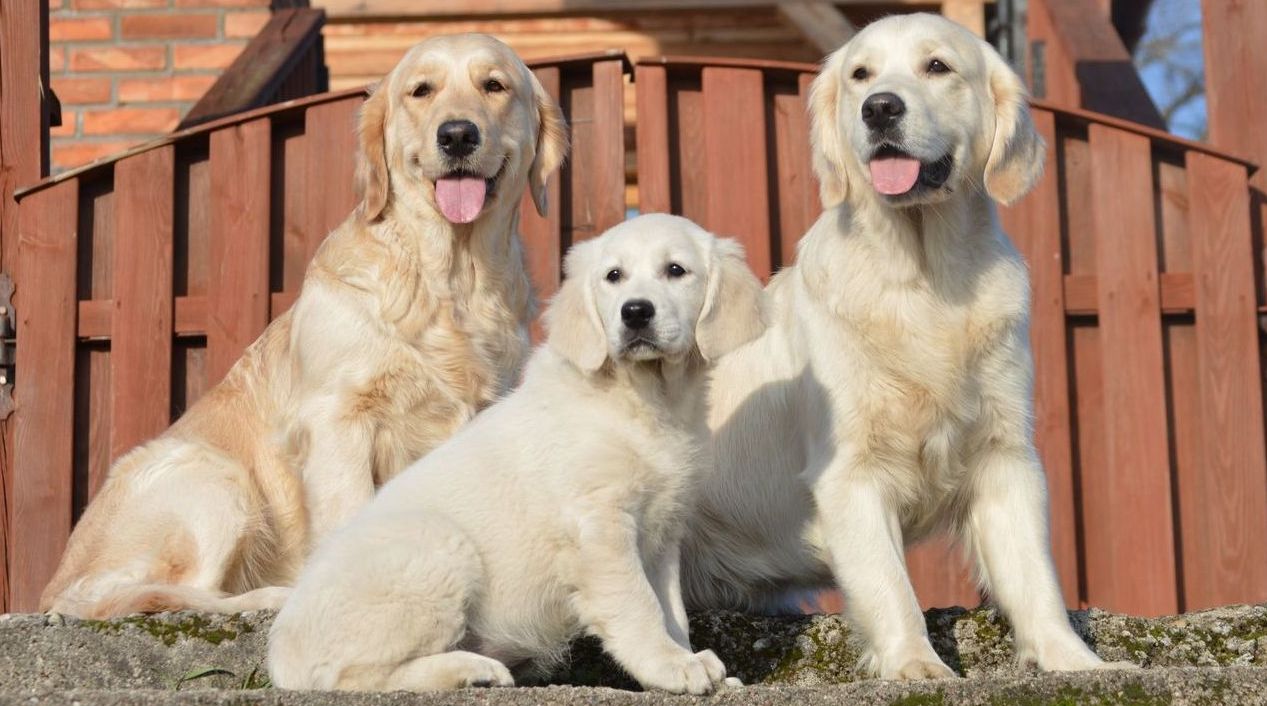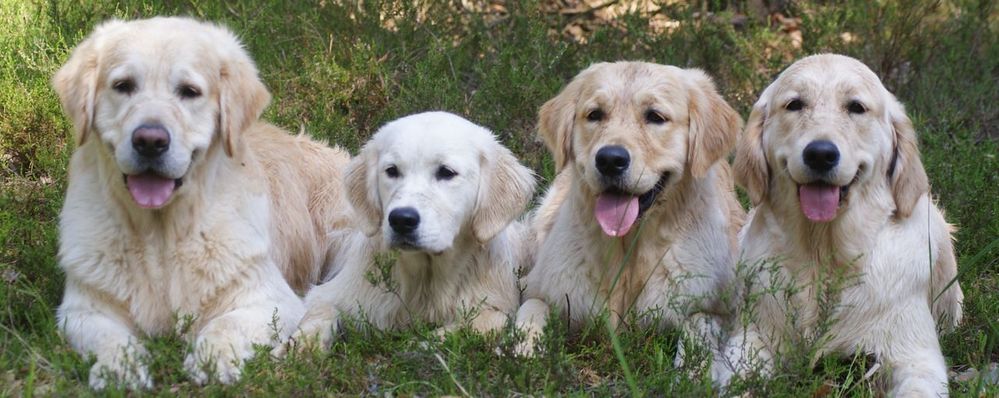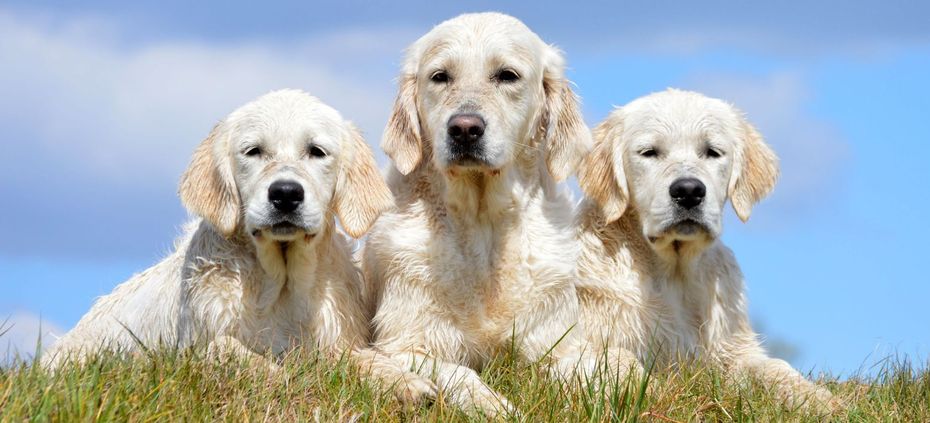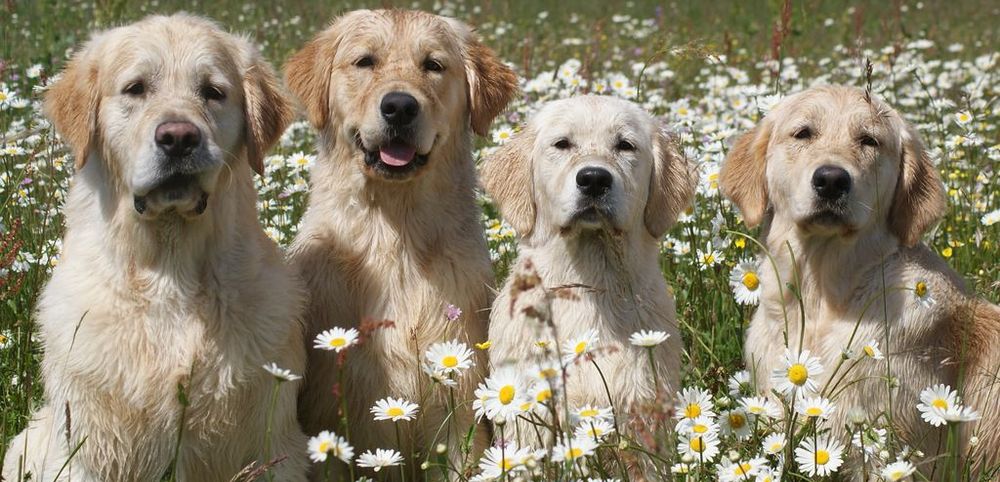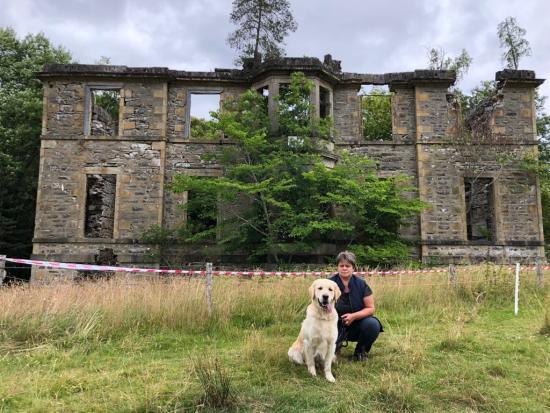About breed golden retriever
History
The Golden Retriever was developed in late 19th Century Scotland and England primarily by crossing Flat- and Wavy-coated Retrievers,
Tweed Water Spaniels, and a red Setter. The Golden was bred by British aristocrats to be a dual-purpose dog,
able to retrieve waterfowl and upland game birds and also to be a companion. Lord Tweedmouth produced some of the early foundation stock by mating
a yellow Wavy-coated Retriever named Nous to his Tweed Water Spaniel, Belle. The Golden Retriever’s friendly disposition, attractive appearance,
and high level of trainability have made this breed one of the most popular in the United States.
Today, Goldens are found at field trials and dog shows, in family homes and nursing homes,
leading the blind and serving as ears or hands for handicapped persons.
The Golden Retriever was recognized by the United Kennel Club in 1956.
Breed Standard
Symmetrical, balanced, active, powerful, level mover; sound with kindly expression.
Characteristics
Biddable, intelligent and possessing natural working ability.
Temperament
Kindly, friendly and confident.
Head and Skull
Balanced and well chiseled, skull broad without coarseness; well set on neck, muzzle powerful, wide and deep. Length of foreface approximately equals length from well defined stop to occiput. Nose preferably black.
Eyes
Dark brown, set well apart, dark rims.
Ears
Moderate size, set on approximate level with eyes.
Mouth
Jaws strong, with a perfect, regular and complete scissor bite, i.e. upper teeth closely overlapping lower teeth and set square to the jaws.
Neck
Good length, clean and muscular.
Forequarters
Forelegs straight with good bone, shoulders well laid back, long in blade with upper arm of equal length placing legs well under body. Elbows close fitting.
Body
Balanced, short-coupled, deep through heart. Ribs deep, well sprung. Level topline.
Hindquarters
Loin and legs strong and muscular, good second thighs, well bent stifles. Hocks well let down, straight when viewed from rear, neither turning in nor out. Cow-hocks highly undesirable.
Feet
Round and cat-like.
Tail
Set on and carried level with back, reaching to hocks, without curl at tip.
Gait/Movement
Powerful with good drive. Straight and true in front and rear. Stride long and free with no sign of hackney action in front.
Coat
Flat or wavy with good feathering, dense water-resisting undercoat.
Colour
Any shade of gold or cream, neither red nor mahogany. A few white hairs on chest only, permissible.
Size
Height at withers: dogs: 56-61 cms (22-24 ins); bitches: 51-56 cms (20-22 ins).
Faults
Any departure from the foregoing points should be considered a fault and the seriousness with which the fault should be regarded should be in exact proportion to its degree and its effect upon the health and welfare of the dog.
Note
Male animals should have two apparently normal testicles fully descended into the scrotum.



